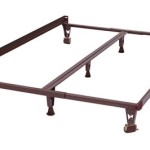Moving a 2-Year-Old to a Big Bedroom
Transitioning a two-year-old to a bigger bedroom can be a significant milestone in their development. It represents a step towards independence and offers them more space to explore and play. However, this transition can also bring about anxieties and challenges, especially for a young child who is used to their familiar surroundings. Understanding the potential difficulties and preparing adequately can ensure a smoother transition for both you and your child.
Preparing the New Room
Before moving your child, it’s essential to make the new bedroom inviting and comfortable for them. This involves:
-
Creating a Safe and Comfortable Space:
Ensure the room is childproofed, with no loose cords or sharp edges. Install safety gates if necessary. -
Decorating with Familiar Elements:
Incorporate familiar objects and colors from their previous room to create a sense of continuity. This could include their favorite toys, blankets, or posters. -
Adding Personal Touches:
Personalize the room with their name on the door or wall art featuring their interests. -
Choosing Age-Appropriate Furniture:
Select furniture suitable for their age and needs, such as a low bed, a sturdy dresser, and a bookshelf. -
Maintaining a Consistent Routine:
Continue with their established bedtime routine, even with the new room. This provides them with a sense of normalcy and security.
Introducing the New Room Gradually
Abruptly moving a child to a new room can be overwhelming and confusing. It’s essential to introduce them gradually, allowing them to adjust to the changes at their own pace. This can be achieved by:
-
Visiting the New Room Regularly:
Bring your child to the new room for short periods, allowing them to explore and familiarize themselves with the space. -
Playing in the New Room:
Encourage imaginative play in the new room, especially with their favorite toys and comforting objects. -
Sleeping in the New Room for Short Periods:
Start by having them nap or sleep in the new room for a few nights, slowly increasing the duration over time. -
Using Positive Reinforcement:
Celebrate their successes and acknowledge their progress, even if it’s just a few minutes in the new room. Provide praise and encouragement.
Addressing Concerns and Challenges
Moving to a new room can trigger anxieties and fear in a two-year-old. It’s crucial to address these concerns with patience and understanding.
-
Acknowledge Their Feelings:
Validate their feelings and allow them to express their concerns. -
Offer Comfort and Reassurance:
Provide them with a sense of security and comfort through warm hugs, soothing words, and familiar objects. -
Remain Consistent:
Maintain a consistent approach and routine to create a sense of stability and predictability. -
Create a Safe Space for Transitions:
Offer a transitional object, like a favorite blanket or stuffed animal, to help them feel comfortable in the new environment.
Moving a two-year-old to a bigger bedroom is an exciting milestone that can be a positive experience. By preparing the room, introducing the new space gradually, and addressing their concerns, you can help them navigate this transition with confidence and joy. Remember, patience and understanding are key, and their adjustment will take time.

Ultimate Guide To The Toddler Bed Transition Taking Cara Babies

Moving From Cot To Bed Tips And Ideas Raising Children Network

Crib To Toddler Bed Transition The Ultimate Check List Forever Freckled

When Siblings Share A Room Taking Cara Babies

Walk In Closet Turned Into Creative Toddler Bedroom Gluesticks Blog

It S Alive A Transitional Toddler Room

66 Cool Kids Room Ideas Paint Furniture Storage And More

Helping Your 2 Year Old Adjust To A New Sibling Babycenter

Are Your Toddler And Baby Sharing A Room Tips Tricks For Success

Transitioning From Crib To Toddler Bed







